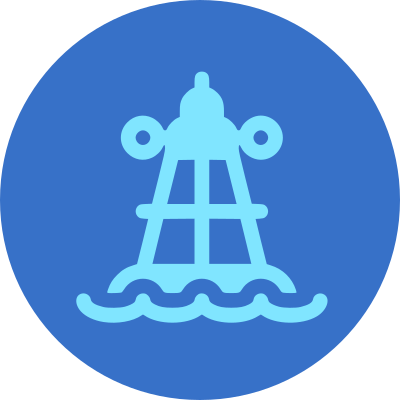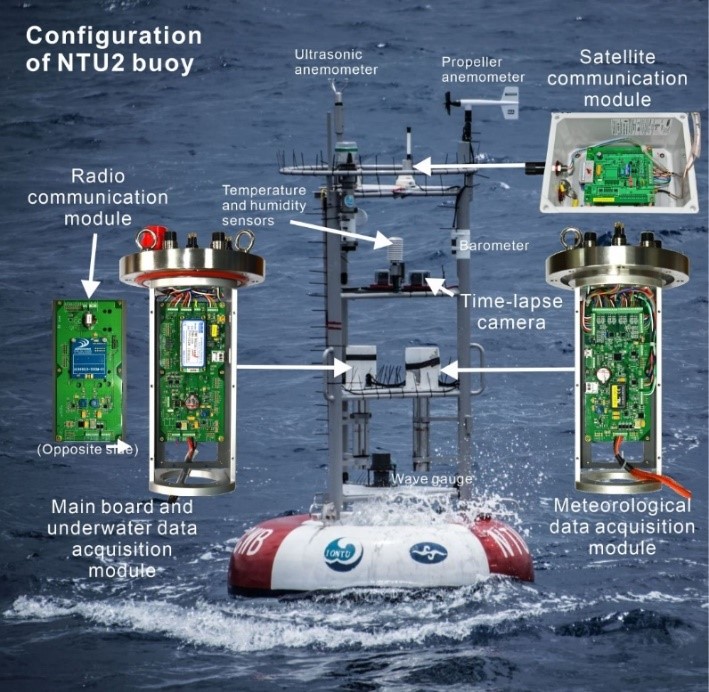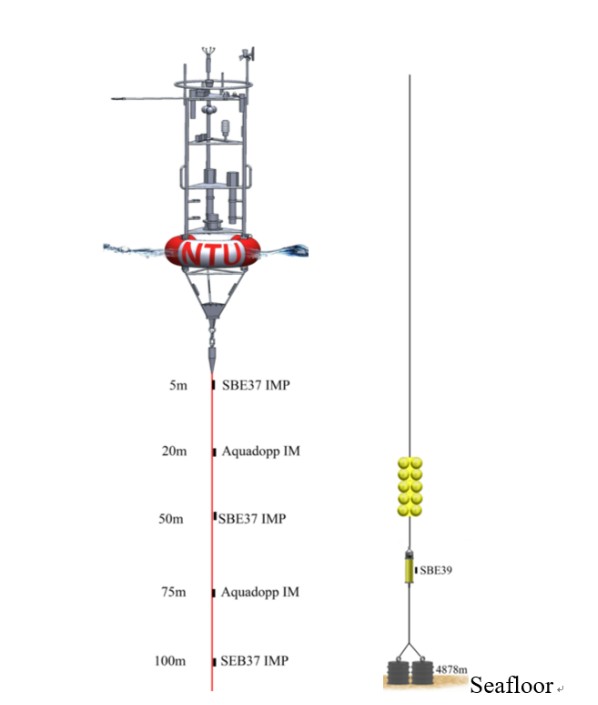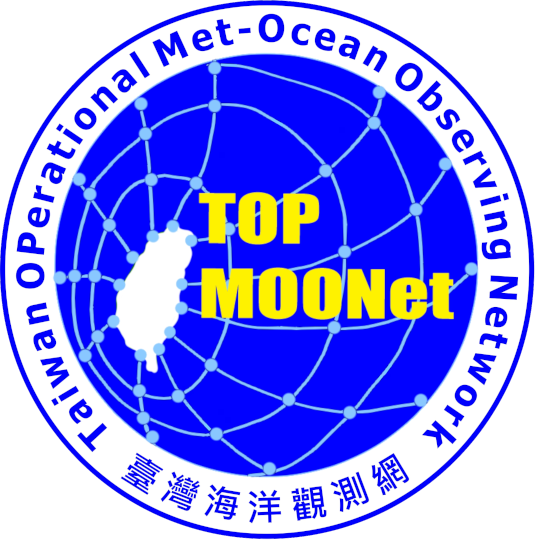
Chief Scientist
Sen Jan
Plan
The main project of TOPMOON aims to maintain two data buoys: one in the western North Pacific (NTU2 in Fig. 1) and the other near the southeast coast of China (Matsu in Fig. 1). NTU2 is located at 122.6°E and 21.9°N (depth ~4878 m) and the location is in a most typhoon passed region east Taiwan (Jan et al., 2017). Station Matsu is located at 120.15°E and 26.25°N (depth ~30 m). The rational of the two locations is clear. In addition to typhoons, NTU2 is frequently influenced by internal tides, mesoscale eddies, and the western boundary current. Whereas Matsu can be an outpost for monitoring coastal environment and China Coastal Current in winter (e.g., Jan et al., 2002, 2006). Any variability in the marine environment of the two sites can conceivably affect the surrounding waters of Taiwan.
The project adopts the data buoy (Figs. 3 and 4) designed and assembled by the Institute of Oceanography, National Taiwan University (Jan et al., 2017; Yang et al., 2019). This is a cost-effective data buoy, which uses low-power consumption technologies on the framework of an Autonomous Temperature Line Acquisition System (ATLAS) (Hayes et al., 1991). The meteorological and oceanic data acquisition system transmit data through Iridium satellite to land station. A low electric power consumption microprocessor is used to control data acquisition and transmission, including data measured by underwater sensors and transferred by an inductive modem. The electric power is supplied by lithium batteries than solar panels to reduced form drag of the stainless-steel tower of the buoy ( Fig. 3 ). The capacity of batteries is designed to support buoy operation for more than 18 months. For TOPMOON, meteorological and upper ocean data ( Table 1 ) will be transmitted to a receiving station every hour via satellite communications. To survive in extreme strong typhoon winds, the buoy system uses a user customized stainless-steel connector between the fiber glass float and a high-density polyethylene coated steel mooring wire below (Fig. 4).
Table 1 Basic meteorological and oceanic data collected by the buoy used for TOPMOON
| Parameters | Sampling interval |
|---|---|
| Air temperature (°C) | 6-min |
| Air pressure (hPa) | 6-min |
| Wind speed (m/s) | 6-min |
| Wind direction (°) | 6-min |
| Humidity (%) | 6-min |
| Solar radiation (W/m2) | 6-min |
| Precipitation | 6-min |
| Seawater temperature (°C) (upper 100 m) | 1-hr |
| Salinity (upper 100 m) | 1-hr |
| Current velocity (m/s) (25 and 75 m) | 1-hr |
| Wave height (m) | 1-hr |
| Wave period (s) | 1-hr |
| DO (μmol/L) (5 m) | 1-hr |
| pH | 1-hr |


Goals
An operational mode of the data buoy observations is planned to achieve in four years. The primary annual goals are:
- Year 1 :
-
(a) Integration of existing observational resources.
(b) Field test of deep water buoy with meteorological sensors and underwater temperature and salinity sensors.
(c) Assemble of coastal data buoy system. - Year 2 :
-
(a) Field test of deep water buoy with the addition of wave.
(b) Underwater biogeochemical sensors, and field test of coastal data buoy. - Year 3 :
-
(a) Improving data buoy system based on the result of the field tests.
(b) Endurance test of the two data buoys in an operational mode. - Year 4 :
-
(a) Evaluation of the reliability and performance of the buoy observations.
(b) Assessment of the system stability and data quality.

